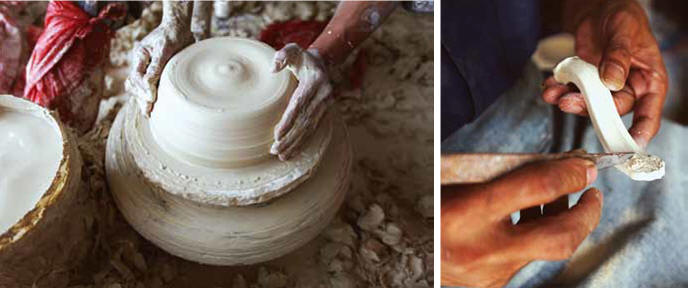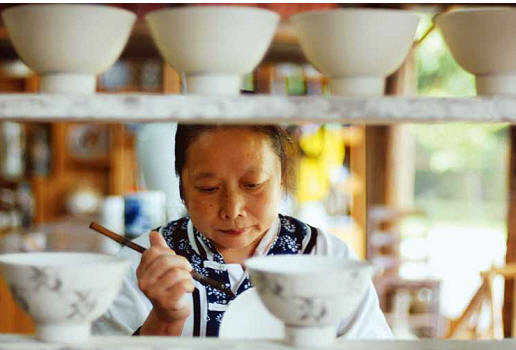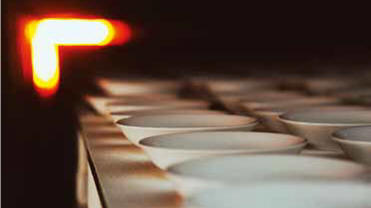Porcelain is generally believed to have originated in China. Porcelain manufactured during the Tang Dynasty period (618–906) was exported to the Islamic world, where it was highly prized. By the Sui (about 580 AD) and Tang (about 620 AD) dynasties, porcelain had become widely produced.
Porcelain Capital: Jingdezhen
Jingdezhen is located in Jiangxi Province. Jingdezhen's porcelain has been famous not only in China but also in other countries. It became known internationally for being "as thin as paper, as white as jade, as bright as a mirror, and as sound as a bell". Jingdezhen's natural resources include kaolin, coal, manganese, and lime, but it is the kaolin that has made the city famous in China and the world. For over a millennium, its unique kaolin has enabled Jingdezhen to make highquality porcelain.
How to make porcelain?
Forming

Pottery can be produced in three basic forming traditions: handwork, wheel work, and slip casting. It's very common for wheel-worked pieces to be finished by handwork techniques.

Glazing
Unlike their lower-fired counterparts, porcelain ware does not need glazing to render them impermeable to liquids and for the most parts are glazed for decorative purposes and to make them resistant to dirt and staining.
Decoration
Porcelain ware may be decorated with under glaze using pigments that include cobalt and copper or over glaze using coloured enamels.

Firing
In this process, green (unfired) ceramic ware is heated to high temperatures in a kiln to permanently set their shapes. Porcelain is fired at a higher temperature than earthenware so that the body can vitrify and become non-porous.





